Wood Furniture Making in Lower Saxony, Germany
By Friedrich Hallweg, Germany

Large logs are often inexpensive but more difficult to handle; only some woodworkers can process them. However, these difficulties did not stop Jan Narten, a young woodworker from Germany who cuts large-diameter logs and makes unique wooden furniture.
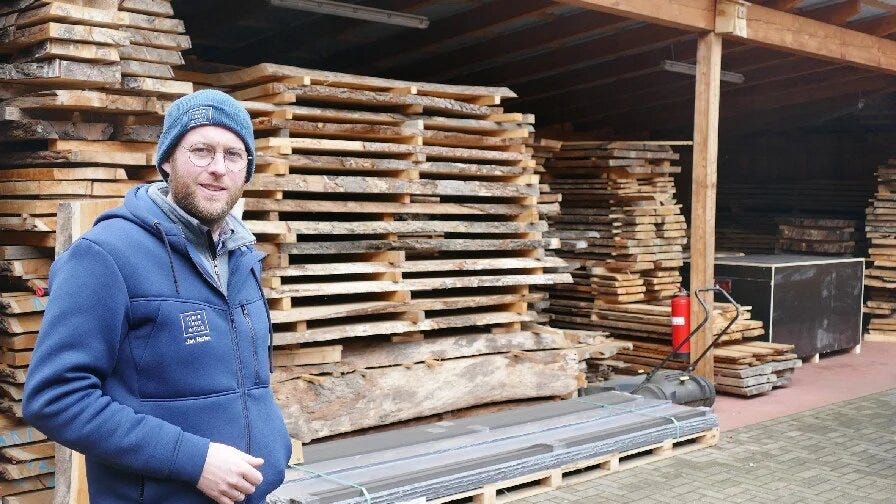

Right at the entrance to Jan Narten's carpentry shop in the small, well-maintained village of Stemmen in the district of Rotenburg an der Wümme, there is an imposing stack of sturdy oak boards. Jan Narten, welcomes his customers with a friendly smile and his customers receive something more than just wood products from his company.
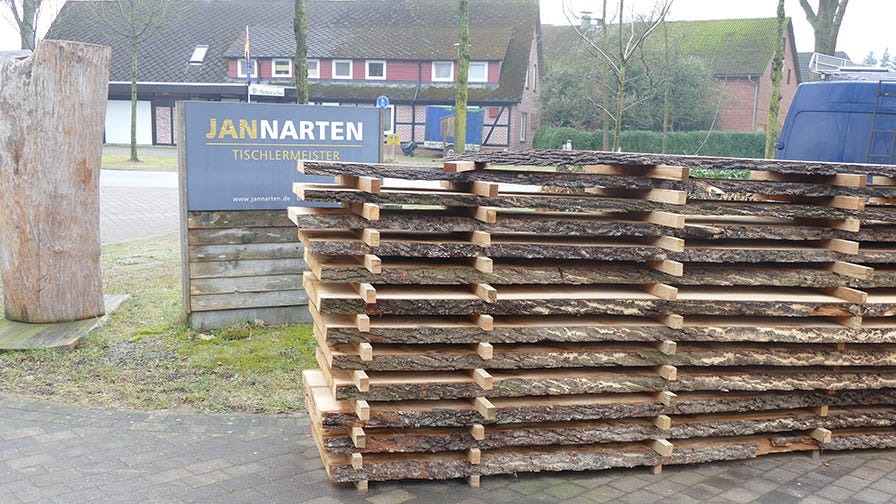

Jan realized that only a few people were interested in large logs. Their transportation is too complicated, and further sawing is too laborious. However, the idea of processing logs up to 140 cm in diameter weighing several tons has two main advantages: such logs are relatively cheap to obtain and can be made into exceptional value-added products.
But let's start from the beginning.


After his studies, at age 20, Jan started working as a subcontractor for various companies, mainly in assembly work. He learned a lot during this time. But over the years, the idea of starting his own business led him to woodworking in its finest form.
A school friend now working as a forester once told Jan, "You know, if I build a house for myself, you will make me a kitchen out of alder." It was an ordinary conversation between two friends over a beer. Still, as the topic kept coming up, one day, the friends decided it's time! They decided to make a kitchen from alder wood, which they would harvest themselves.
The first step was to find a good sawmill. The solution came from a YouTube video of a Wood-Mizer LT20 band sawmill.
In 2015, Jan installed a stationary LT20 sawmill with an electric engine in his shop and, with growing enthusiasm, began to produce lumber for furniture making in his company. A robust loader now moves heavy logs. The freshly cut wood is first air-dried, placed on four large low-lying cargo trailers, then connected to a biogas wood kiln for final drying.
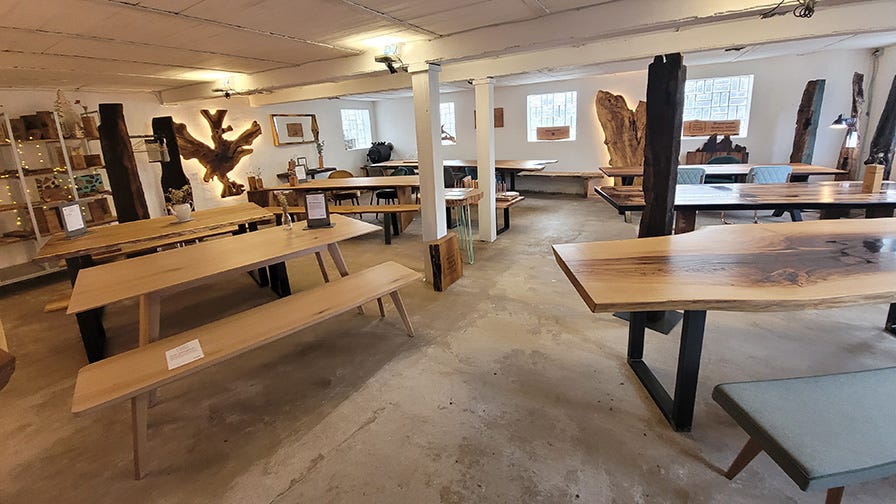

In his company, Jan manufactures any piece of custom-made furniture, from a TV cabinet to living room furniture or kitchen cabinets. His clients are fully involved in the design. Every detail is discussed. The customer determines the style, wood species and the boards from which the cabinet, table, or bed will be made. They can even use wood from their own property. Jan’s enthusiasm is infectious, and the relationship between the customer, carpenter, and product develops accordingly.


Until recently, large, durable tabletops with natural bark-covered edges were still painstakingly carved from mighty trunks of trees. After drying for 26 hours and several days of processing, they were sanded to perfect smoothness by touch using a chainsaw and a parquet sander. But since 2021, this work has been carried out at Jan’s new sawmill. This is the Wood-Mizer LX250, which can cut thick boards up to 140 cm wide.
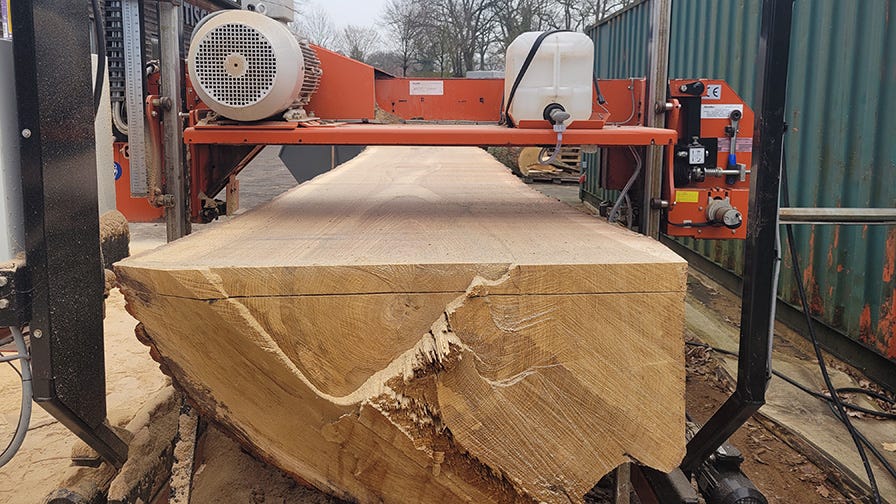

Another machine, the Wood-Mizer MB200 SlabMizer, flattens and smooths large wood surfaces up to 142 cm wide. Now the old loader stacks large logs on the low bed of the LX250 sawmill with a wide-throat sawhead moving along two rails. The LX250 saws big logs into clean boards easily. The operator practically uses four fingers to control the joystick and potentiometer. The surface is then finished in one operation using the SlabMizer.


The final touches take quite a bit of time. On company premises, Jan knows the origin of every plank. At the customer's request, the corresponding information can be burned with a laser on furniture made from this wood. With a smartphone, customers can see where their bed, table, or kitchen was once a tree. Customers love this extra service. Another essential raw material is reclaimed “wood waste” from demolishing half-timbered houses, ancient wooden bridges, and other old buildings.
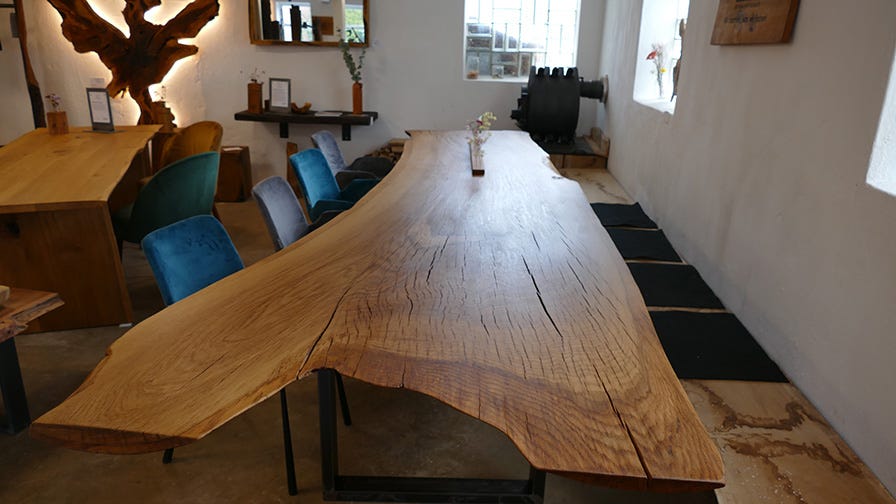



The LT20 sawmill, with its inexpensive, thin-kerf narrow band blades, produces more boards and less sawdust than conventional chainsaws or wide circular blades, has also proved its worth. Jan can be compared to a good cook in handling valuable wood waste. Everything goes to use! Almost all scraps and sawdust are recycled. They can be found in a unique rustic mirror frame or an epoxy resin countertop. It is a complex job that does not forgive many mistakes and only receives a high purchase price if executed perfectly. At the same time, Jan carefully ensures that the wood does not entirely drown in resin but remains tangible in its structure providing an exceptional and pleasant effect.


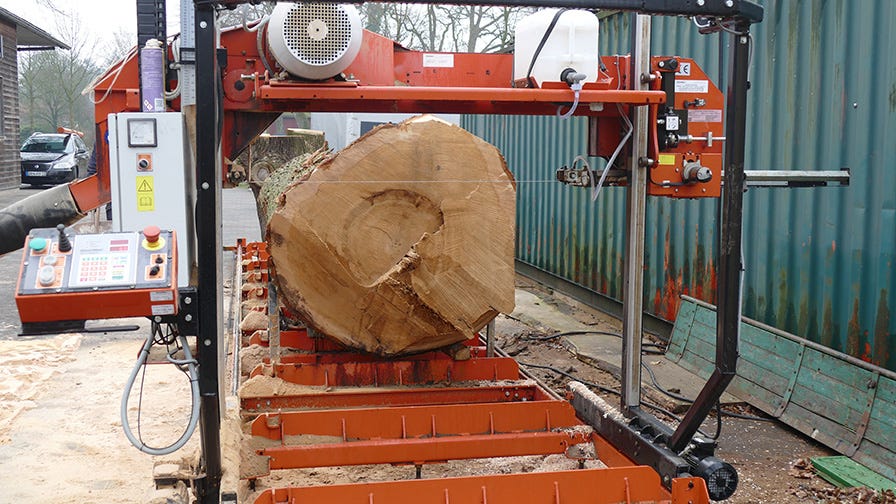



For Jan, a table is not just a table but a piece of furniture that brings people to eat, play, and spend time together. This philosophy runs through all his work. The bedrooms he crafts are an oasis of well-being made from oak, alder, and cedar. The beds are entirely made of wood and do not contain metal, right down to the frame inserts - no screws, rails, or clamps. Therefore, aesthetics and quality are always the focus of his attention.


The company's showrooms are located in the courtyard and sometimes even in Jan’s house. Previously, this seemed like a disadvantage; however, it has become a hallmark of his success today. This openness, creative versatility, and love for his projects generate the trust distinguishing Jan’s carpentry workshop from other companies. And that also explains his company's slogan: "More than wood."
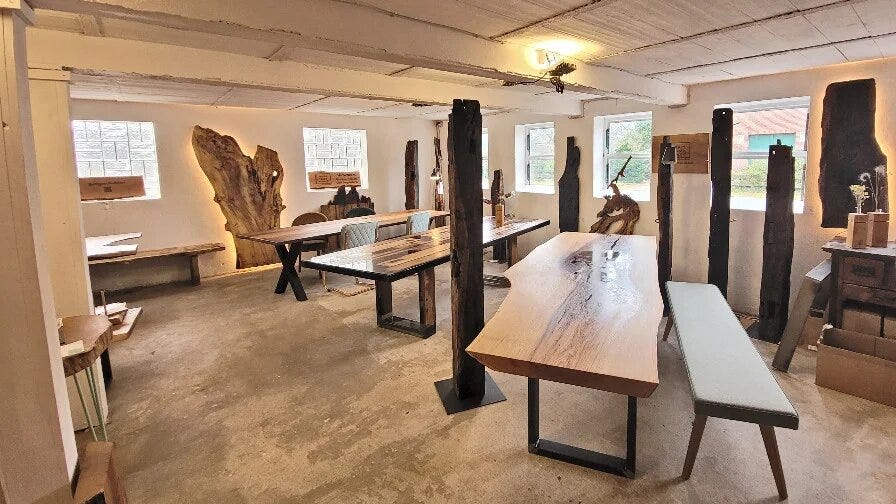

***
